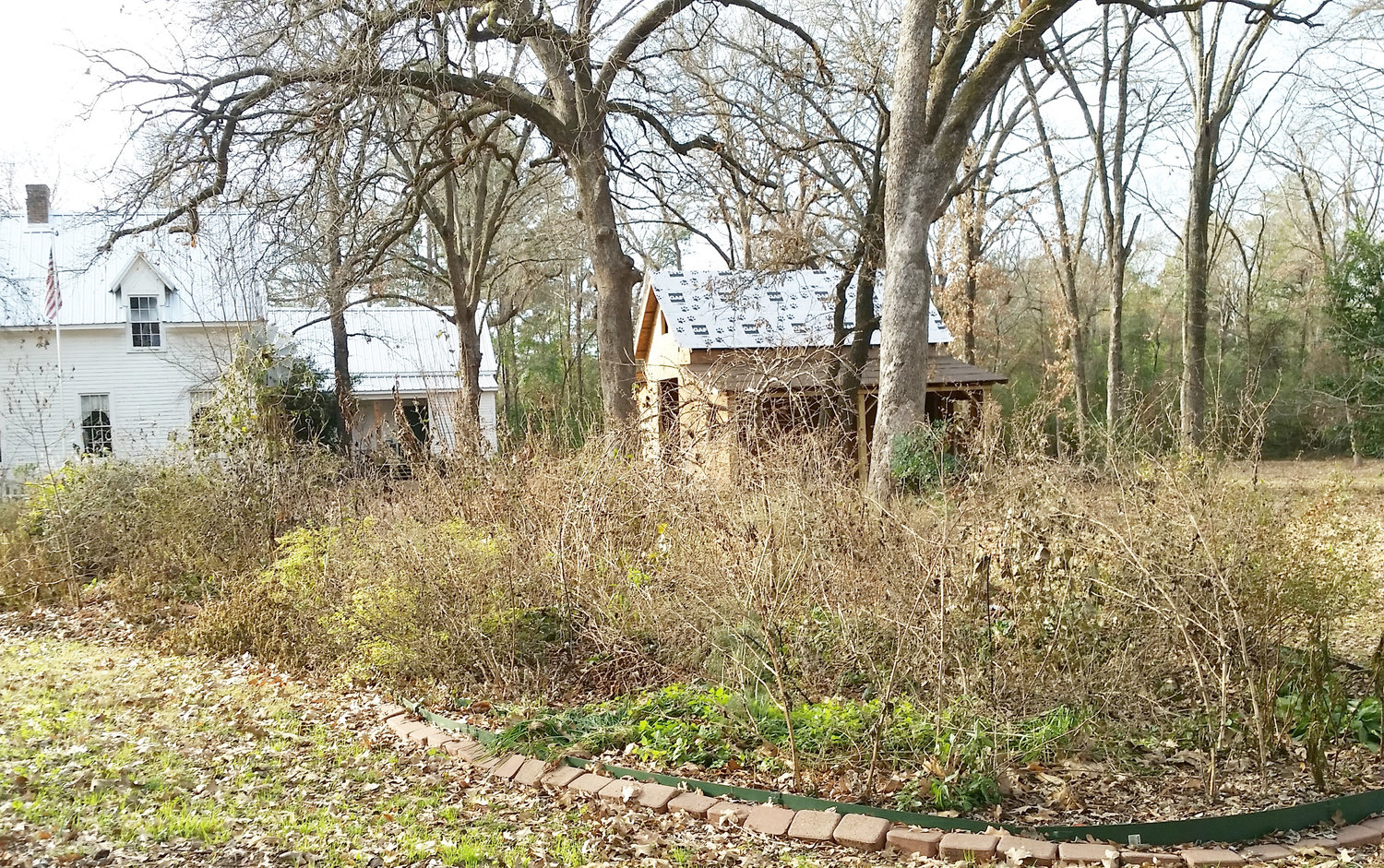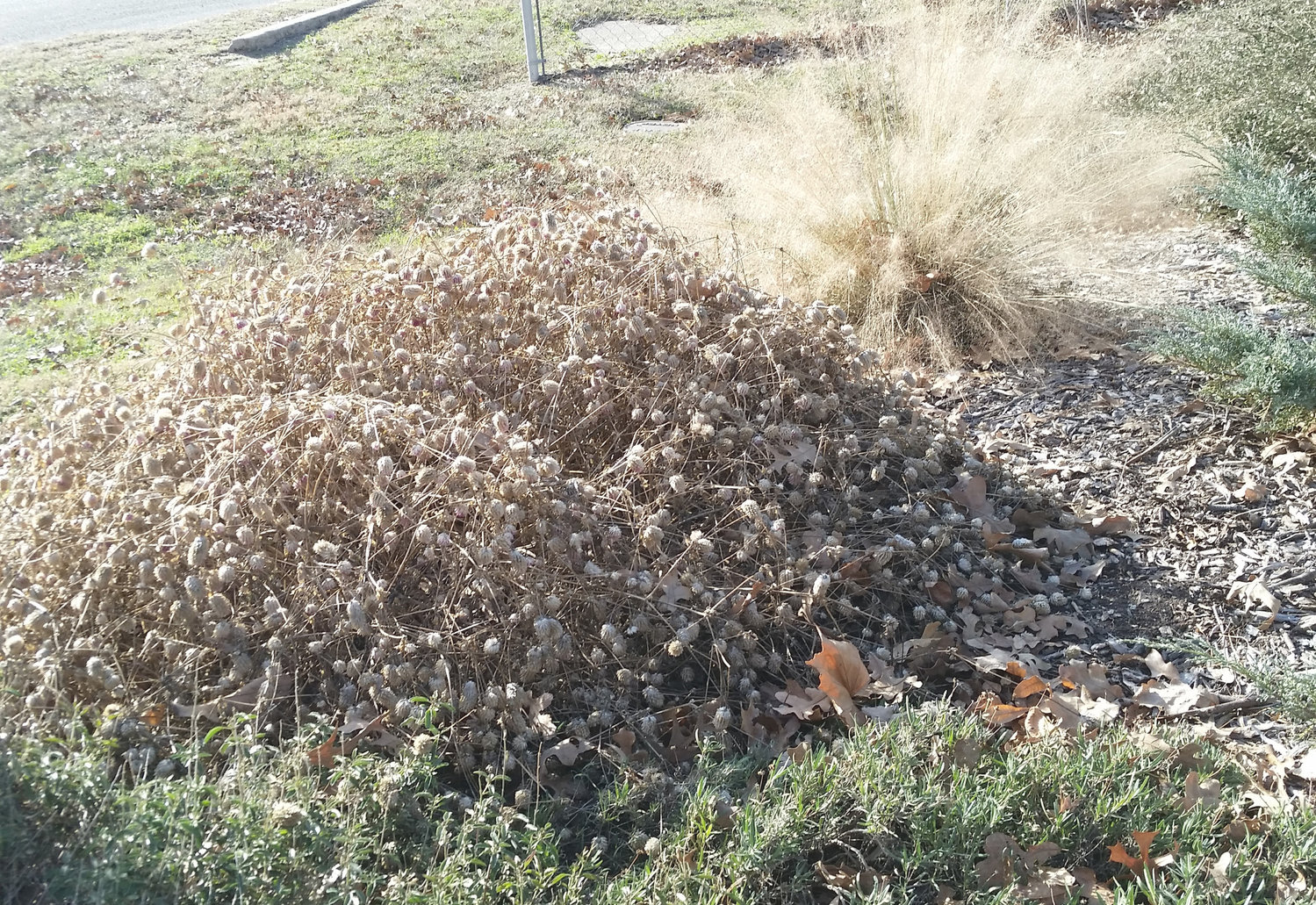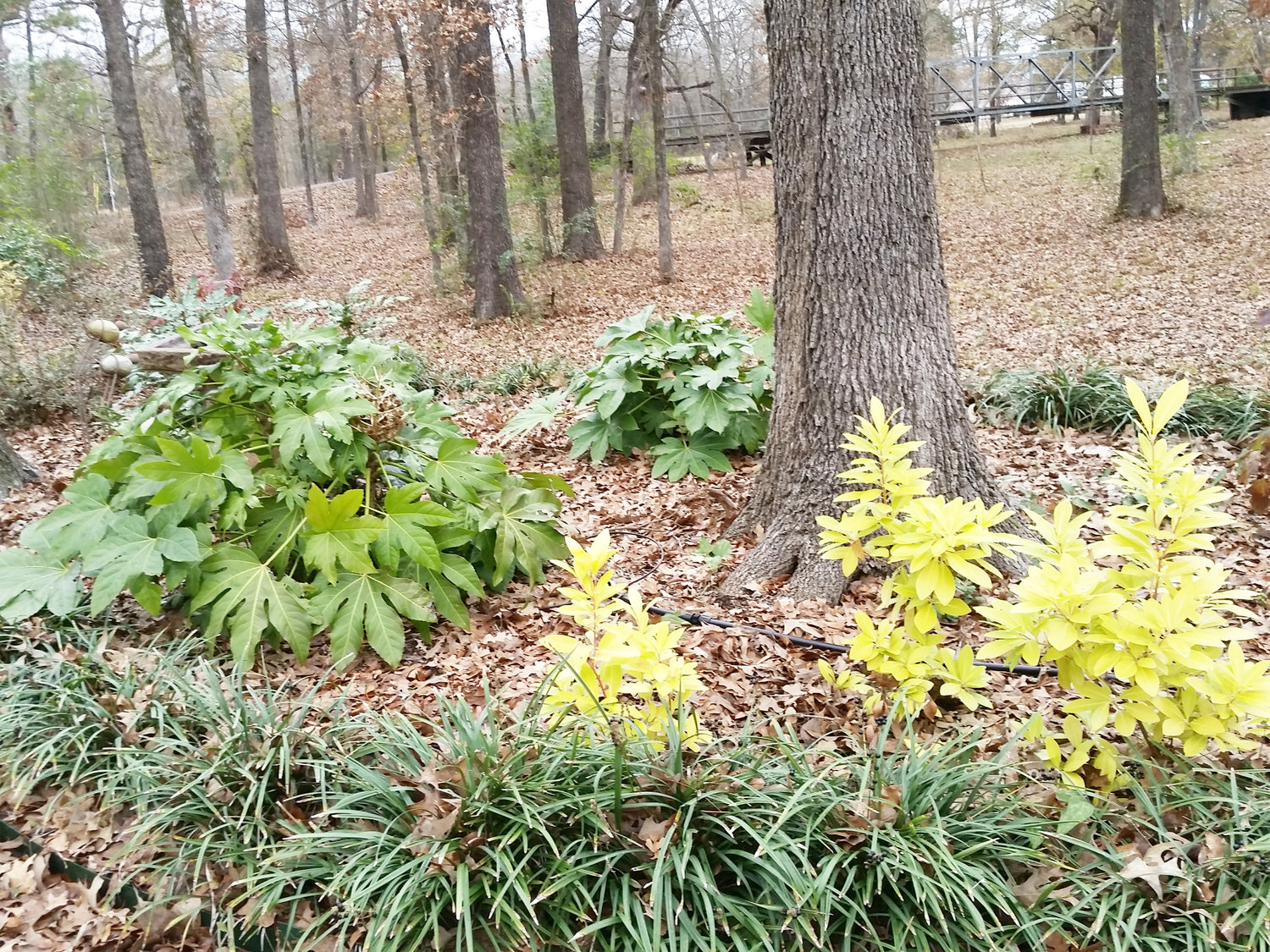IN EAST TEXAS GARDENS | BY LIN GRADO
The holidays are over, decorations put away, and the brief periods of warm weather draw you outside for morning coffee. You gaze out at your garden and it looks - dreadful. Flowers that provided nectar for butterflies and hummingbirds, hit by hard freezes in December, are now a mass of dead leaves and branches. Some shrubs seem to be skeletal versions of the lush plants from the summer. Must we look at that destruction till spring?
At our next workday at the Quitman Arboretum, we’ll start cutting back the dead foliage in our beds. As weather permits, we’ll prune and cut and haul away, and make our gardens tidy.
There are some plants we don’t prune yet.
Leave the growing foliage on your spider lilies and other fall-bloomers to replenish the bulbs for next year’s blooms; you can prune it after it yellows and dies.
Leave the frozen leaves on your summer bulbs like crinum and amaryllis for continued freeze protection. I like to loosely wrap the limp leaves of my crinum around the neck of the bulb – it looks neater and provides more winter protection for these Southern mainstays.
Wait to prune most shrubs, as pruning can stimulate new growth that is subject to freeze.
Wait till Valentine’s Day to prune roses.
Don’t prune any spring-flowering shrubs or you’ll cut off the buds and have no blooms next year.
Don’t prune the old-fashioned blue or pink hydrangeas, as they bloom on old wood.
Don’t prune lantanas (especially newer hybrids) - this may reduce hardiness. If necessary (e.g., to clear a path) you can cut back to twelve inches, but you may lose the plant if the rest of the winter is hard.
There are many plants we do cut back following a hard freeze. This doesn’t have to be done in one week, so we work at it as time and volunteer help allow.
All annuals can be pruned back or even pulled out of your garden. If it’s a reseeding annual like bachelor buttons, zinnia, or cockscomb, leave some seed heads behind for next year’s plants.
Perennials such as salvia, phlox, and coneflower can be trimmed close to the base – if there’s a rosette of new leaves, leave that alone. Evergreen perennials that are a little woodier such autumn sage can be cut back to about 6-12”.
Canna leaves should be cut at ground level and removed from the garden; leaf rollers overwinter in the foliage.
Ferns like Southern wood fern that have died back due to frost can have all of their fronds removed. Don’t prune evergreen ferns like holly fern or autumn fern.
Ornamental grasses and the grass-like liriope (monkey grass) should be cut back by the middle of January, before the new growth starts; otherwise you’ll have to look at cut edges all season.
Fruit trees should be pruned while dormant. Late January is the time to start this pruning - remember not to remove more than 25 percent of the branches. Ask your extension agent for more information on pruning your fruit trees.
If the plants you pruned are free from disease and pests, you can add them to your compost. I practice ‘chop and drop’ pruning: I cut the trimmings into small pieces and place as the first layer of mulch by the plant. Make sure you top that with 2 or 3 inches of mulch; I use the fallen tree leaves as part of this mulch. If you have some tender perennials, you might want to cover them with a light mulch such as pine needles to protect them for the rest of the winter.
Take advantage of the warm days during the winter; your beds will look better and your spring chores will be lighter.
About the author: Lin is a Texas Master Gardener in Wood County. Email your gardening questions to her at txgardengal@gmail.com. To learn hands-on techniques, join her and other volunteers each Wednesday morning at 9, at the Quitman Arboretum and Botanical Gardens.











